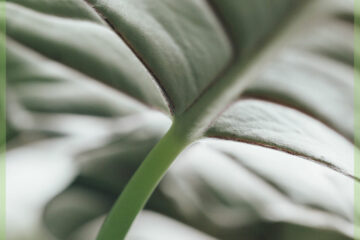Pests part 1: aphids and scale insects
Perhaps you have heard of them, or perhaps you have seen them: the aphids and scales. These are those nasty little critters that don't appreciate your plants. What do you do when you see them? How do you recognize and combat them? We have listed the answers to these questions for you. So that you will soon know what to do in the event of an unwanted visit.
Table of contents
Aphid: distribution
Spread by: flies, drafts and cross-contamination
Aphid: recognize you like this
This six-legged visitor sucks the nutrients from your plant. You'll find it most often on the young leaves because that's where most of the plant's nutrients go. A kind of buffet for the aphids.
The most common aphid is green in color. But there are also yellow, black, red/pink, brown and white aphids. Despite the fact that all types look slightly different, they all have the same back. Each louse has two tubular organs at the back with which they secrete honeydew. Honeydew looks and feels like a dirty sticky substance on the leaf. Fortunately, because of the two tubular organs, they are not difficult for us to recognize in combination with the sticky substance that they leave behind. In addition, all aphids are oval-shaped and have a week body.
Aphid: infestation and damage
Aphids often infect the plant with various viruses. It depends on the type of virus that you will see on the plant. Yellow-green and yellow leaves mean Chlorosis. But plants can also dry out or grow less well. When the louse infects the plant with a deadly virus, it is called Necrosis. Parts of the plant will darken and wilt.
The aphid can also cause honeydew, which causes various fungi (such as sooty mold) to develop that further affect the plant. Basically, the damage of the aphid varies a lot. Therefore, regularly view your plants from different sides.
Aphids: get rid of them!
The aphids can be combated in various ways and fortunately quite easy to get rid of. If you want to control it biologically, you can do this with larvae of lacewings, gall sparrows or ladybugs. But chemical pesticides will also be effective against these leaf sitters.
Finally, there are a number of home, garden and kitchen resources that you can use. Cold water is one of them. Rinse the lice away with cool water and repeat several times so they don't come back. You can also make a mixture of water and spirits: spray the plants with a mixture of about 20 ml of spirits, 20 ml of green soap/dishwashing liquid and 1 liter of water. Note that if you do not use biodegradable detergent, it can be harmful to your plant.
For the aphid, in addition to these two home, garden, and kitchen methods, there are dozens of others to try; so if you don't have everything you need for these methods, you can find even more online.
Scale: spread by
Spread by: insects, birds, pets, wind and clothing
Shield louse: recognize you like this
A scale louse has, as the word implies, a shield. This shield is hard, but not attached to the louse; it can therefore also be separated from its body. When you encounter this plant-unfriendly visitor, you will most likely only see his shield. The color of the shield is light to dark brown.
The scale insects like to sit on the bottom of a leaf and/or on the trunk of your plant together with other aphids. You can also find them in different sizes, colors and shapes. There are oval, round and elongated scales. The scale insects' pupae also resemble mealybugs, so be careful not to confuse them.
Scale: infestation and damage
The scale insects feed on the sap of your plant. They pierce the plant tissue and suck the life out of your plant. You will see yellow or brown spots because of this and your plant will grow less. If nothing is done about these little shield makers, your plant will die. So watch out!
Scale: get rid of it!
There are several ways to get rid of your scale insects. The Rhyzobius lophanthae is a small ladybug that feeds on scale insects, including the scale insect!
You can also use chemical pesticides. Since a pest of scale insects is difficult to get rid of, we recommend this. If you do not have this at home and you want to fight your pest immediately, you can always use a home, garden and kitchen remedy. Use olive oil and a cotton swab for this. Touch the louse with this and the louse will suffocate because the breathing tubes are closed. Be careful, because you don't want eggs to be released.
Prevention is better than cure
Check your plants regularly for unwanted visitors. A useful moment can be, for example, during watering. Then look on and under the leaf and along the stem. A good tool for this is a magnifying glass or a flashlight so that you can spot the critters better.

